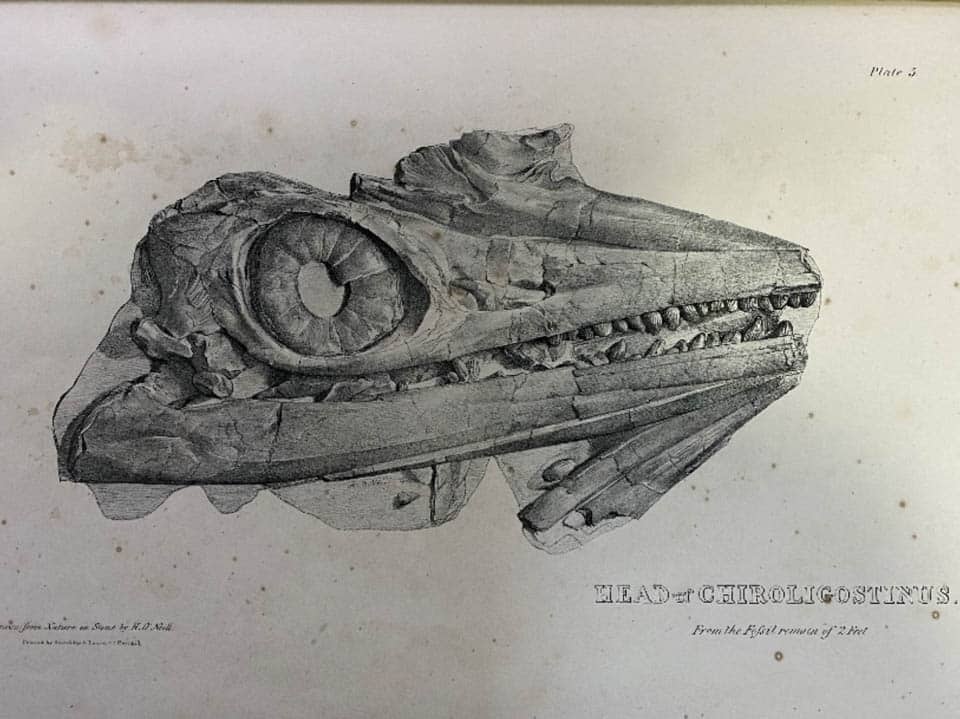Dinosaurland Fossil Museum is housed in a Grade 1 listed building which used to be the Congregational Church.

A front view of the building housing Dinosaurland Fossil Museum
Mary Anning
Mary Anning was baptised in this church in 1799 and worshipped here until she defected to the Church of England shortly before she died. This building is very much her spiritual home. Mary Anning discovered the first Ichthyosaur in Lyme Regis in 1811. Most Lyme Regis Ichthyo-saurs are the ‘small ones’ at about 2 metres long. Mary Anning’s discovery was one of the much rarer, ‘big platyodon’ types which are four to five times bigger. She sold her find and it eventually made its way to London.The Langdon Ichthyosaur is displayed in the museum and is another of the ‘big platyodon’ types. It was discovered in Lyme Regis in 1972 and is the biggest to be found here since the first find. I have kept this in the same condition as when it was discovered. So it gives a perfect illustration of what Mary Anning’s find would have looked like when she made her pioneering discovery.

The teeth of the Langdon Ichthyosaur

The inside of the building while still a church
Why did Mary Anning Move to the Church of England?
Mary Anning worshipped in the Congregational Church for most of her life. But she moved to the Church of England suddenly, just before she died and that is where she is buried. The sudden move is traditionally attributed to the greater respectability that the Church of England afforded in contrast to the rebelliousness of the Congregationalists. But there might be an alternative reason as hinted by one of the books in the museum collection.
The Book of the Great Sea Dragons by Thomas Hawkins was printed in 1840 as a record of the discovery of the first marine reptiles from Lyme Regis and Street. The book contains a wonderful collection of engravings of these first discoveries. Most of the engravings are attributed to the discoverer so many are marked with the name of Mary Anning.
But one Ichthyosaur skull was unattributed. It has only recently been discovered that the skull was found and sold by Reverend Gleed who was minister of the Congregational Church at the time that Mary Anning moved to the Church of England. So, Mary Anning was competing with her minister to sell fossils. I wonder if professional rivalry was why she moved churches rather than the pursuit of respectability?

